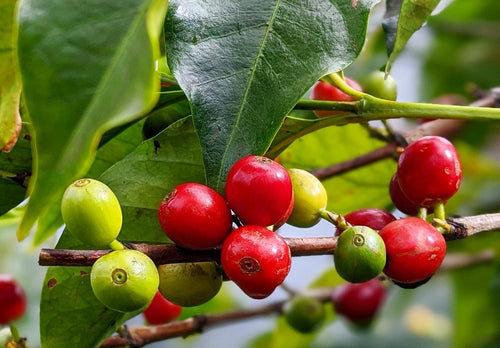30 Apr 2025
The Specialty Coffee Expo 2025 just wrapped up in Houston, and it brought together over 17,000 coffee professionals, making it the largest SCA Expo to date. For roasters, this year’s show was full of insight into where green coffee sourcing is heading, how global pressures are shaping supply, and what innovations are worth paying attention to.
If you didn’t make it to the expo, or you’re just trying to catch up, here’s a recap of the green coffee trends that matter:
1. Tight Supply and High Prices Are the New Normal
One of the biggest conversations on the floor was around supply challenges. Coffee remains expensive, inventories in warehouses are low, and logistics delays are still common. Roasters and importers alike are adjusting to a market where limited availability and steady high prices are now part of everyday planning.
What this means for roasters: Don’t expect significant price drops anytime soon. Forward-planning, building strong supplier relationships, and sourcing from importers with local inventory are more important than ever.
2. Climate Change Is Reshaping Coffee Origins
Climate change and its impact on coffee-growing regions continues to be top of mind. Unpredictable weather, rising temperatures, and shifting harvest seasons are affecting both yield and quality — especially in areas known for specialty production.
What this means for roasters: Year-to-year lot variation will likely become more common. Staying close to your supply partners — and understanding what’s happening at origin — will help you maintain consistency in your offerings.
3. Direct Relationships and Tech-Enabled Transparency Are Gaining Ground
Another clear trend is the move toward greater traceability — and not just in words, but in action. Roasters are prioritizing direct relationships with producers to have more control over quality and supply, even if it means paying a premium. At the same time, new tools like QR codes, AI-driven traceability platforms, and mobile apps are making it easier for consumers to quickly access farm information without having to read through long content.
What this means for roasters: Customers increasingly want to know where their coffee comes from — but they want the information to be quick, clear, and easily accessible. Investing in transparent, tech-friendly storytelling can help your brand stand out.

4. Tariffs and Trade Pressures Are Here to Stay
Alongside conversations about supply and climate, trade uncertainty was front and center. Tariffs on agricultural imports and shifting regulations continue to add complexity to the green coffee supply chain, particularly for Latin American and African coffees.
What this means for roasters: Buying from importers that already warehouse green coffee in North America helps reduce risks tied to customs delays, unexpected fees, and fluctuating shipping costs.
5. Coffee Vocabulary Is Evolving
With the launch of the Coffee Value Assessment (CVA) and a growing push toward shared language, the way green coffee is evaluated and marketed is shifting. Instead of relying solely on scores, the focus is moving toward more descriptive, relatable ways to talk about quality — helping bridge the gap between producers, roasters, and consumers.
What this means for roasters: Staying up to date with new frameworks like the CVA will help you communicate value more clearly to customers and navigate sourcing decisions more confidently.
Final Thoughts
The takeaway from SCA Expo 2025? The green coffee world is shifting. Roasters are facing new challenges — from climate and trade to changing customer expectations — but also new opportunities to source better, build closer relationships, and stay ahead of the curve.
If you’re looking for traceable, specialty green coffee in local stock, that’s where we come in.
Need samples or want to chat? Contact us — we’re always happy to help.

